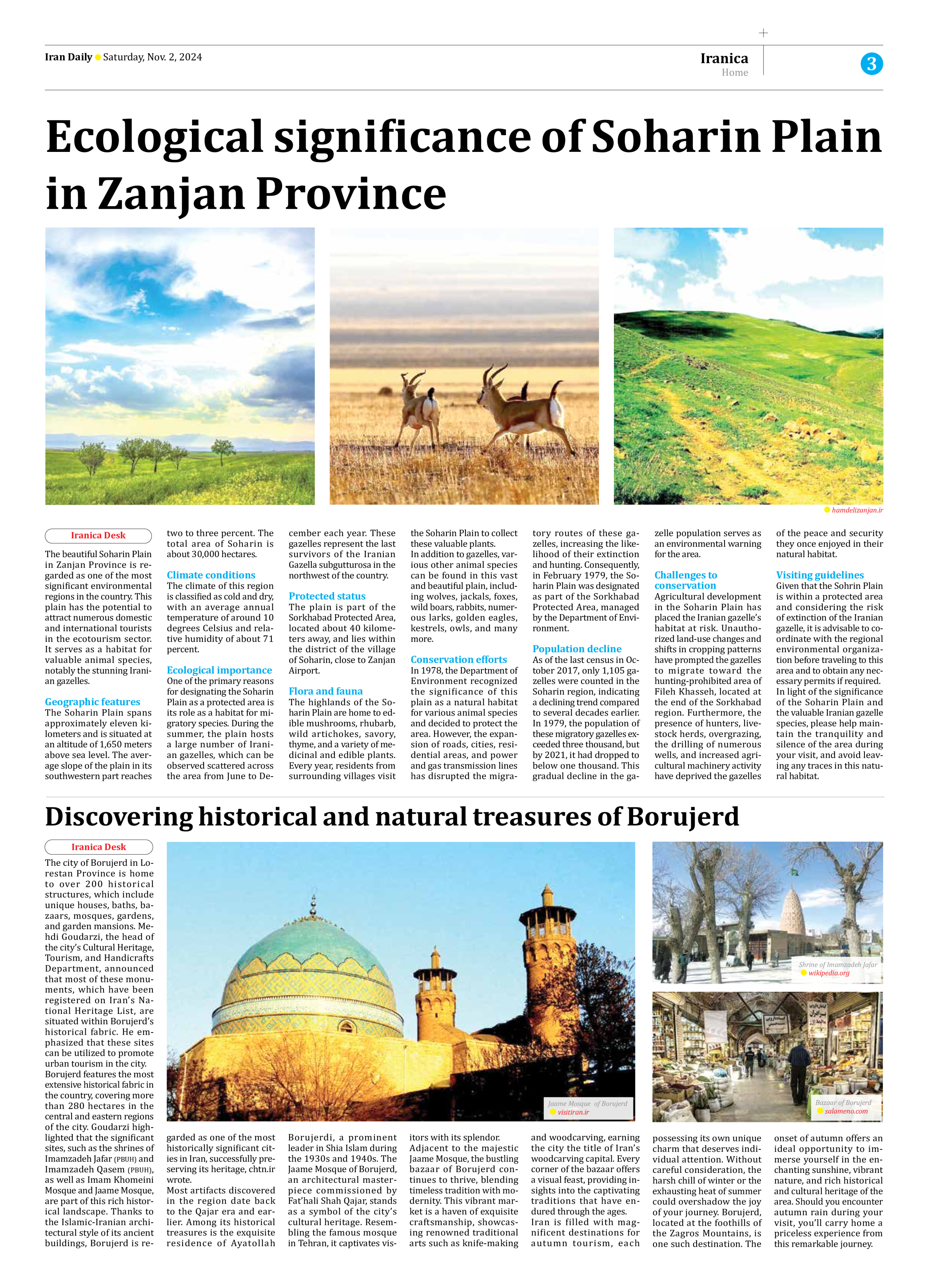
Ecological significance of Soharin Plain in Zanjan Province
The beautiful Soharin Plain in Zanjan Province is regarded as one of the most significant environmental regions in the country. This plain has the potential to attract numerous domestic and international tourists in the ecotourism sector. It serves as a habitat for valuable animal species, notably the stunning Iranian gazelles.
Geographic features
The Soharin Plain spans approximately eleven kilometers and is situated at an altitude of 1,650 meters above sea level. The average slope of the plain in its southwestern part reaches two to three percent. The total area of Soharin is about 30,000 hectares.
Climate conditions
The climate of this region is classified as cold and dry, with an average annual temperature of around 10 degrees Celsius and relative humidity of about 71 percent.
Ecological importance
One of the primary reasons for designating the Soharin Plain as a protected area is its role as a habitat for migratory species. During the summer, the plain hosts a large number of Iranian gazelles, which can be observed scattered across the area from June to December each year. These gazelles represent the last survivors of the Iranian Gazella subgutturosa in the northwest of the country.
Protected status
The plain is part of the Sorkhabad Protected Area, located about 40 kilometers away, and lies within the district of the village of Soharin, close to Zanjan Airport.
Flora and fauna
The highlands of the Soharin Plain are home to edible mushrooms, rhubarb, wild artichokes, savory, thyme, and a variety of medicinal and edible plants. Every year, residents from surrounding villages visit the Soharin Plain to collect these valuable plants.
In addition to gazelles, various other animal species can be found in this vast and beautiful plain, including wolves, jackals, foxes, wild boars, rabbits, numerous larks, golden eagles, kestrels, owls, and many more.
Conservation efforts
In 1978, the Department of Environment recognized the significance of this plain as a natural habitat for various animal species and decided to protect the area. However, the expansion of roads, cities, residential areas, and power and gas transmission lines has disrupted the migratory routes of these gazelles, increasing the likelihood of their extinction and hunting. Consequently, in February 1979, the Soharin Plain was designated as part of the Sorkhabad Protected Area, managed by the Department of Environment.
Population decline
As of the last census in October 2017, only 1,105 gazelles were counted in the Soharin region, indicating a declining trend compared to several decades earlier. In 1979, the population of these migratory gazelles exceeded three thousand, but by 2021, it had dropped to below one thousand. This gradual decline in the gazelle population serves as an environmental warning for the area.
Challenges to conservation
Agricultural development in the Soharin Plain has placed the Iranian gazelle’s habitat at risk. Unauthorized land-use changes and shifts in cropping patterns have prompted the gazelles to migrate toward the hunting-prohibited area of Fileh Khasseh, located at the end of the Sorkhabad region. Furthermore, the presence of hunters, livestock herds, overgrazing, the drilling of numerous wells, and increased agricultural machinery activity have deprived the gazelles of the peace and security they once enjoyed in their natural habitat.
Visiting guidelines
Given that the Sohrin Plain is within a protected area and considering the risk of extinction of the Iranian gazelle, it is advisable to coordinate with the regional environmental organization before traveling to this area and to obtain any necessary permits if required.
In light of the significance of the Soharin Plain and the valuable Iranian gazelle species, please help maintain the tranquility and silence of the area during your visit, and avoid leaving any traces in this natural habitat.







